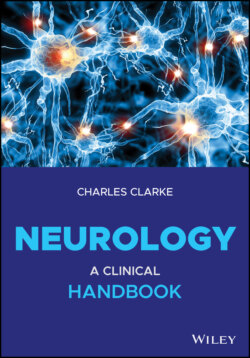Читать книгу Neurology - Charles H. Clarke - Страница 169
Frontal Lobes
ОглавлениеMany lesions remain silent. Frontal regions have connections with the basal ganglia and limbic systems, networks that mediate emotional, social and motivational behaviours. Lesions involving the dorsal frontal convexities can cause impassivity and apathy – more medial lesions may even cause mutism, while orbito‐frontal lesions are more likely to produce disinhibition. However, localisation is distinctly imprecise.
Lesions involving dominant inferior frontal gyrus cause anterior (Broca’s) aphasia.
Substantial damage such as traumatic frontal brain injury, direct or contra‐coup can cause disabling problems:
Abandonment of social inhibitions – from inopportune comments to more profound, such as urination, exposure or masturbation
Inappropriate jollity (witzelsucht) – tales overlong, unwanted, with loss of empathy
Apathy (abulia), lack of initiative, poor planning (dysexecutive problems)
Irritability, anger or the converse – placidity in the face of irritation
Distractability, or the converse – obsessions
Continuing one action when another is appropriate, a.k.a. motor perseveration
Utilisation behaviour: the patient sees a stethoscope and begins to use it.
Release of primitive programmes from early infancy, such as grasp, rooting or sucking reflexes can emerge. Bilateral frontal lesions, such as small vessel disease can lead to gait apraxia and failure to initiate walking (gait ignition failure), with urinary incontinence.
Alleged brain damage with behavioural change has become a common plea in claims following minor head injury. The patient and relatives are asked leading questions about features such as impulsivity, temper, fiscal ability, multi‐tasking, planning, depression and anxiety – all common problems in any event. There is no evidence that these are caused by brain injury following a minor blow to the head, with normal imaging. Frontal lobe seizures are described in Chapter 8.
